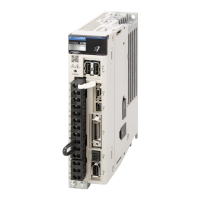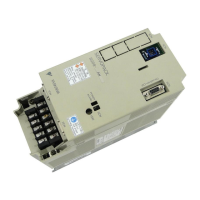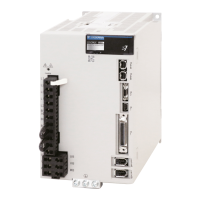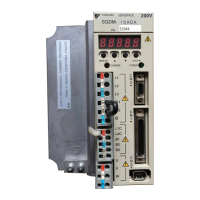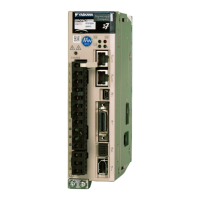4.2 Motion Command Details
4.2.3 ZRET (Zero Point Return)
4
Motion Control Program Commands and Instructions
4-25
Origin Return Methods and Parameters
With an incremental encoder, there are 13 different methods that you can use for the origin
return operation. This section explains the operations that occur after starting an origin return
operation and the parameters that must be set before issuing the command.
DEC1 + C Pulse (OW3C = 0)
Operation after Origin Return Starts
1.
Motion is started at the origin return speed in the direction that is specified in the
parameters.
2.
When the rising edge of the DEC1 signal is detected, the axis will decelerate to the
approach speed.
3.
When the first phase-C pulse is detected after passing the DEC1 signal at the approach
speed, the speed will be reduced to the creep speed and positioning will be performed.
4.
When the positioning operation has been completed, the machine coordinate system is
established with the position at the end of the positioning operation as the origin.
*1. SERVOPACK DEC signal.
*2. SERVOPACK P-OT signal.
*3. SERVOPACK N-OT signal.
Setting Parameters
The travel distance after the phase-C pulse is detected is set in the OL42 setting parameter
(Zero Point Return Travel Distance).
If an overtravel signal is detected during the origin return operation, an overtravel alarm will occur.
Register Address Name Setting Details
OW
3C
Zero Point Return
Method
0: DEC1 + C pulse
OW
09 Bit 3
Zero Point Return
Direction Selection
Set the origin return direction.
OL
10
Speed Reference Set-
ting
Set the speed at which to begin the origin return operation.
Only a positive value can be set. A negative value will result in
an error.
Continued on next page.
N-OT
*3
P-OT
*2
(OL40)
(OL42)
(OL3E)
(OL10)
Zero Point Return
Travel Distance
Origin
Start
Creep Speed
Approach Speed
Speed Reference Setting
DEC1 signal
*1
Phase-C pulse
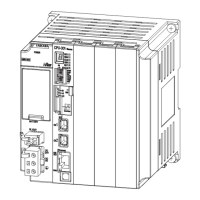
